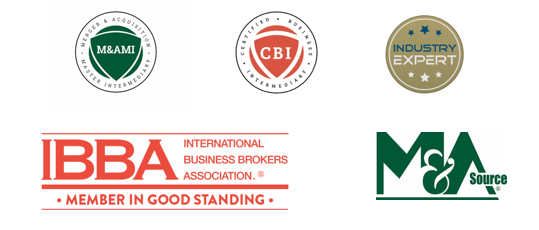Has Your Business Caught a Case of Chronic Complacency?
Visiting a neglected business reminds me of walking into a hospital room—it’s uncomfortable, and something feels off. The symptoms aren’t always obvious at first, but they’re there: a lack of energy, outdated tools, and a sense that the business has been coasting for far too long. I call it chronic complacency, and many owners don’t even realize they’re suffering from it.
Over time, complacency quietly drains value from a company. And when it comes time to sell, this decline becomes painfully clear. Buyers, investors, lenders, and M&A advisors want businesses that are vibrant, growing, and professionally managed. Unfortunately, statistics show that only 25% of businesses on the market actually sell—and chronic complacency is often the reason why.
Here are four red flags that suggest a business has stopped evolving—and what you can do to turn things around:
1. No Employee Succession Plan
One of the most common issues I see is the absence of a clear succession plan. Business owners often avoid this topic, but the reality is—no one runs a company forever. Having an organizational chart with defined leadership roles and a path for future leaders is essential.
Here’s why:
- Internal sale potential: One of your current leaders could become your ideal buyer.
- Buyer confidence: Outside buyers want to see a leadership team ready to take over.
- Employee retention: Without a clear plan, team members may worry about their future and leave.
Once a succession plan is in place, reinforce it with a strong training program and a bonus structure tied to company performance. These elements keep your employees engaged, growing, and invested in the business’s success.
2. Relying Too Heavily on Word-of-Mouth
Word-of-mouth is a powerful asset—but it can also become a crutch. If your only source of new business is referrals, you’re likely missing growth opportunities.
Too many owners become satisfied with “good enough” and stop investing in sales and marketing. This stalls revenue growth and makes the company vulnerable. A couple of key client losses could trigger a downturn that’s hard to recover from—especially when you’re looking to sell.
3. Falling Behind on Change
Complacent business owners stop evolving. They delay tech upgrades, put off equipment replacements, and let their branding (especially their website) go stale.
Buyers notice.
A thriving business embraces change and invests in staying competitive. If your operation looks dated, it signals to outsiders that you’re no longer steering the ship toward the future.
4. The Owner Has Lost the Passion
This is often the final symptom—and it’s the most dangerous. When you’ve lost the energy to lead, innovate, or even think strategically, it’s time to act.
By this point, fixing the business becomes much harder. If you’re no longer learning, dreaming big, or adapting, you’ve likely become stuck. And so has your business.
Staying Ahead of Complacency
Owning a business is one of the most rewarding experiences in life. You create jobs, support your community, and build a legacy. But maintaining that success requires constant attention and intention.
If you want to exit successfully, your business must remain strong, future-ready, and attractive to buyers. That means:
✅ Developing and updating your employee succession plan
✅ Actively pursuing new customers with a real marketing strategy
✅ Investing in technology, branding, and operational improvements
Avoiding chronic complacency isn’t just good business—it’s essential for securing a strong sale and a lasting legacy.

This article was written by Sam Thompson, CBI, M&AMI. Sam is the president and founder of Transitions In Business, a Twin Cities based M&A firm that specializes in selling business to business and healthcare, transportation, manufacturing, distribution and construction/trade services companies. Sam is a Merger and Acquisition Master Intermediary (M&AMI) and a Certified Business Intermediary (CBI) who has successfully guided countless business owners through the sale or merger of their company. Prior to becoming a business broker, Sam was a successful CEO and business owner for 29 years before selling his $16 million conference and event management company. If you have questions about this article and would like to connect with Sam click on the link below.


